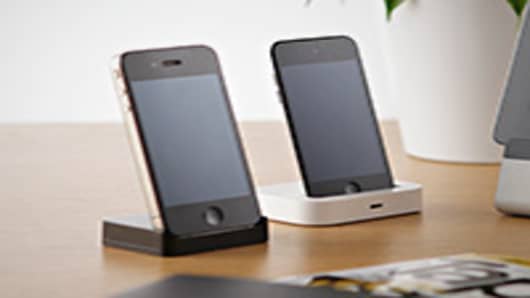If we're to believe the leaks online (which are remarkably consistent), the dock is getting smaller.
Why would Apple change it? Well, it turns out the old dock was large because it had a bunch of proprietary functions built in that don't matter anymore. And if Apple shrinks and simplifies the dock, it should leave more room for other things, like new chips or larger batteries. When it comes to engineering mobile devices, every square millimeter counts. (Read More:New iPhone: What It Means for Apple's Bottom Line)
The big question here is impact. What's this going to do to all those people who have older accessories and charging cables?
Here's my take: This will be a bit of a pain for people who try to charge multiple Apple devices with the same cable, or who have a closet full of iPhone-compatible alarm clocks, stereo speakers, car chargers and other gadgets.
There are a lot of those folks out there: Apple has sold about 100 million iPhones in the past year alone, and that's not counting iPads and iPods. But really, when people buy new iPhones, they tend to buy a few new accessories anyway. (Read More: Apple iPhone 5: The Potential Winners)
A key issue will be how Apple handles an adapter that lets new iPhones connect to older accessories. An adapter definitely won't work for everything — some devices, like alarm clocks and speakers, require such a snug fit that an adapter would probably make it unstable. But for some other devices, like chargers, an adapter might work.
email: tech@cnbc.com



